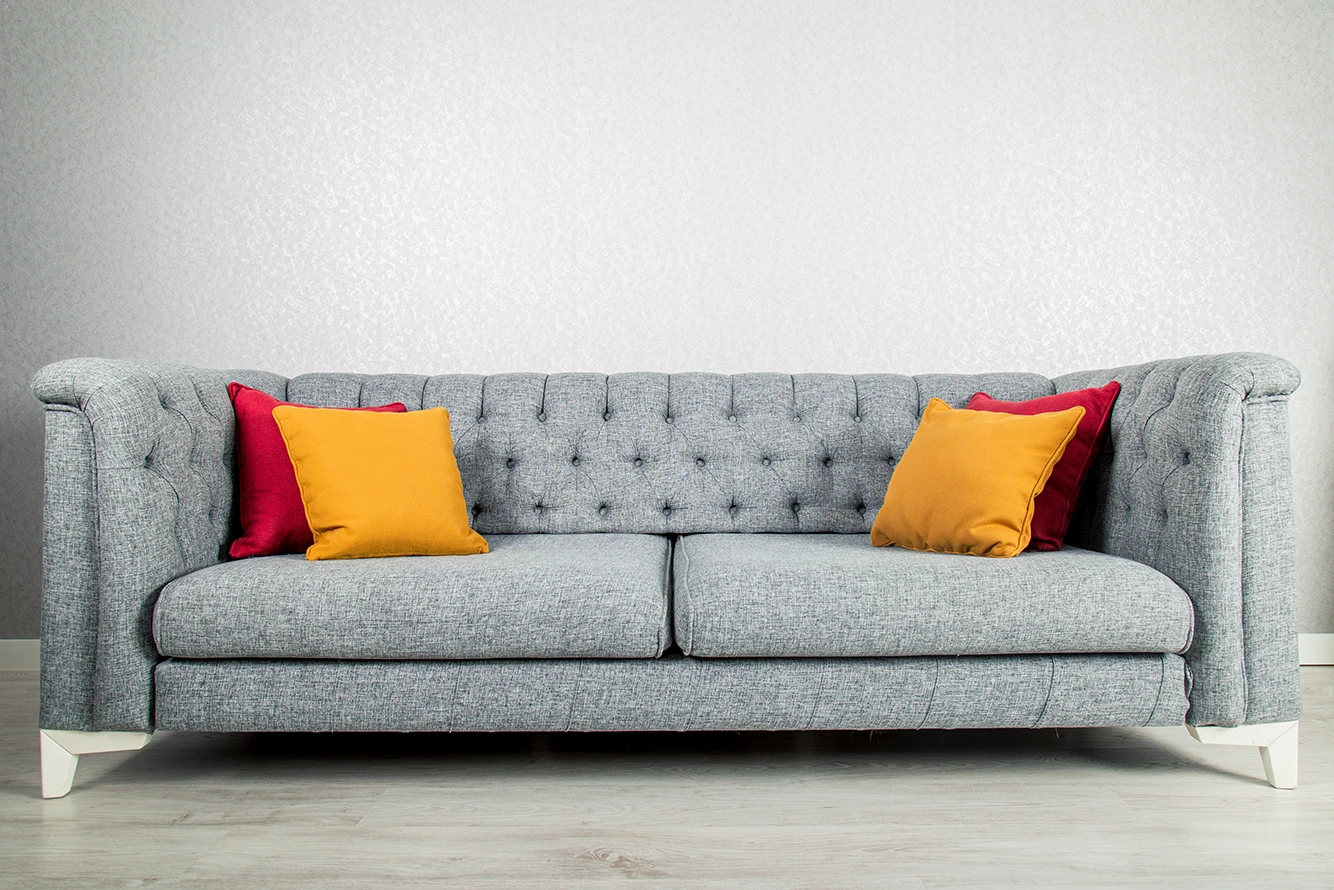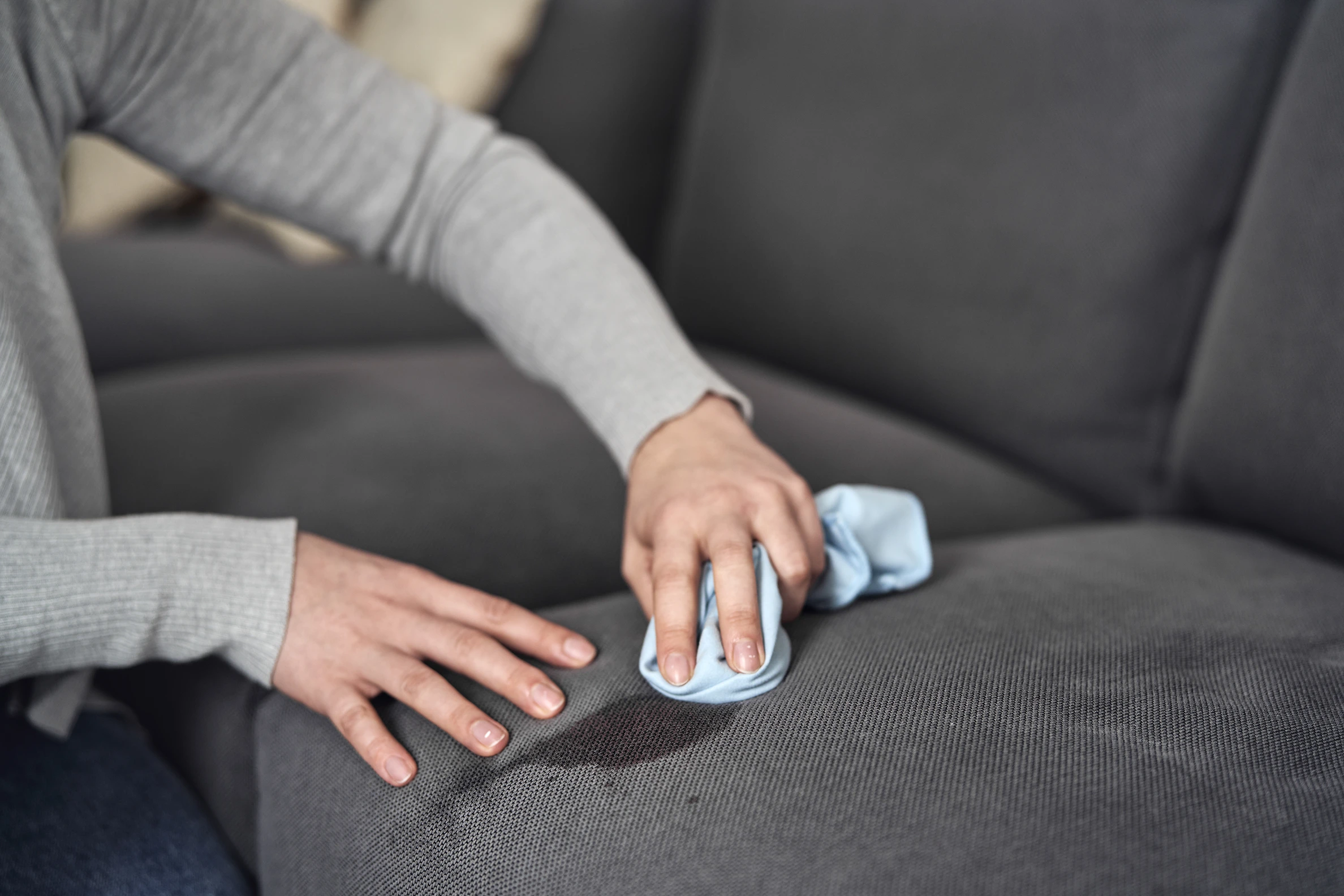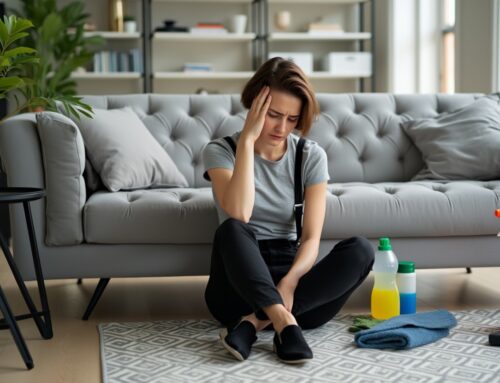The $500 Upholstery Mistake That Haunts Homeowners

Your living room centerpiece—that gorgeous sectional you saved months to buy—is slowly dying. Not from normal wear, but from your well-intentioned attempts to keep it clean.
Most Fraser Valley homeowners are unknowingly voiding their furniture warranties and accelerating fabric breakdown with every DIY cleaning attempt. The irony? They’re trying to protect their investment while systematically destroying it.
The Code That Could Save Your Couch
Every piece of upholstered furniture comes with a cleaning code, usually tucked under a cushion or on the furniture tag. These aren’t suggestions—they’re manufacturer instructions that determine whether your warranty remains valid.
W means water-based cleaning only. S means solvent-based cleaning only. WS means either method works. X means vacuum only—no liquids whatsoever.
Here’s where expensive mistakes happen: homeowners see a stain and grab whatever cleaner is under the kitchen sink. That innocent-looking spray bottle just became a warranty-voiding, fabric-destroying weapon.
Take Sarah from Chilliwack, who tried removing red wine from her cream-colored “S” coded sofa with water and dish soap. The water caused the fabric dyes to bleed, creating a permanent brown halo around the original stain. Her $1,200 sofa became a $150 yard sale casualty.
The Fraser Valley Factor
Our climate makes upholstery care especially tricky. The constant moisture means fabrics take longer to dry, creating perfect conditions for mold and mildew. That “just a little damp” feeling after home cleaning often becomes a bigger problem weeks later when mysterious odors start appearing.
The Better Business Bureau reports that improper cleaning attempts account for 40% of upholstery warranty claims. Insurance adjusters see the same pattern: homeowners causing more damage trying to fix small problems than the original issue ever would have created.
The Real Cost of DIY Disasters
Professional upholstery cleaning typically runs $150-300 for a standard sofa. Replacement costs start around $800 for basic furniture and easily hit $3,000+ for quality pieces. The math seems obvious, yet people keep rolling the dice with home remedies.
Consider the hidden economics. Quality upholstery should last 7-10 years with proper care. Poor maintenance cuts that lifespan to 3-4 years. On a $1,500 sofa, that’s an extra $400+ in replacement costs—money that could have paid for professional cleaning multiple times over.
The Competition Bureau of Canada emphasizes that warranty void situations often leave consumers with no recourse. Manufacturers design cleaning codes to protect their products and your investment. Ignore them at your own financial risk.

When Good Intentions Go Wrong
The most expensive mistakes happen when homeowners try to speed up the drying process. Hair dryers, space heaters, and fans might seem logical, but they can shrink fabric, set stains permanently, and cause color bleeding.
Water-based cleaning on “S” coded fabrics causes immediate and permanent damage. The solvents in the fabric break down when exposed to water, leading to color changes, texture problems, and structural weakness. There’s no fixing this—only replacing.
Conversely, using strong solvents on “W” coded fabrics dissolves protective treatments and can cause fabric disintegration. The damage isn’t always immediate, but accelerated wear becomes obvious within months.
The Professional Difference
Professional cleaners don’t just follow cleaning codes—they understand fabric construction, dye chemistry, and moisture management. They use pH-balanced solutions, controlled moisture levels, and proper extraction techniques that home equipment simply cannot replicate.
The Canadian Home Furnishings Alliance recommends professional cleaning for anything beyond basic maintenance. Their research shows that professional cleaning extends furniture life by an average of 60% compared to DIY-only maintenance.
Modern professional equipment can handle delicate fabrics that would be destroyed by home cleaning attempts. Steam cleaning, dry cleaning solvents, and specialized extraction equipment work together to clean thoroughly while preserving fabric integrity.
Protecting Your Investment
Start by locating and photographing cleaning codes on all your upholstered furniture. Store these photos on your phone—you’ll need them when spills happen.
For immediate spill response, blot (don’t rub) liquid spills with clean, white cloth. Avoid colored towels or paper products that might transfer dye. Don’t use heat, don’t scrub, and don’t apply cleaning products without checking the code first.
Schedule professional cleaning before problems become visible. Waiting until furniture looks dirty means you’ve waited too long. Professional maintenance every 12-18 months prevents most permanent damage and keeps warranties valid.
The Bottom Line
Your furniture represents a significant investment. Treating expensive upholstery like it’s disposable makes zero financial sense. The few hundred dollars spent on professional cleaning pale compared to premature replacement costs.
Most importantly, manufacturer warranties require professional cleaning to remain valid. DIY disasters void these protections, leaving you fully responsible for replacement costs.
Fraser Valley’s moisture-rich environment demands proper upholstery care. Home cleaning methods designed for dry climates often fail spectacularly in our conditions, creating problems that didn’t exist before the “cleaning” attempt.
The choice is simple: invest in professional cleaning or budget for early replacement. Your wallet will thank you for choosing wisely.
Valley Fresh Carpet Cleaning provides professional upholstery cleaning throughout the Fraser Valley, using manufacturer-approved methods that protect your investment and preserve warranties. Our upholstery cleaning specialists understand fabric codes and use the appropriate cleaning methods for each piece. Learn more about furniture cleaning codes and how proper care protects your investment.



